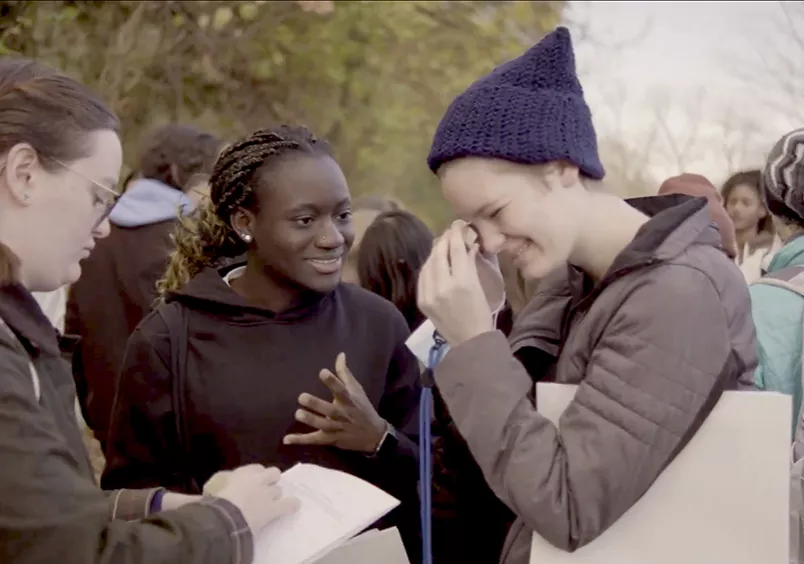Learning How the Earth Works
Students in a Geology 101 course get an early taste of fieldwork just a short ride from campus.
Most people think of Valley Forge National Historical Park as a destination for Revolutionary War history. For generations of Bryn Mawr geology students, it’s been their introduction to a much earlier and lengthier history, one measured in eras rather than decades or even millennia.
Last fall, students in Geology 101: How the Earth Works once again spent a Sunday in Valley Forge learning geology, identifying rocks, creating geological field maps, and collecting geologic data. For more than 20 years, the trip has been led by Professor of Geology Arlo Weil, who was joined in teaching the class by Senior Lecturer in Geology Katherine Marenco.

"I feel like I’ve learned how to see the Earth through a new lens, and I love being able to recognize and interpret the stories it can tell us."
During lab sections in the weeks following the trip, the students finalized their geologic maps, which they then used to model the three-dimensional spatial distribution of the rocks and their orientation. They also took all of their collected data and generated a narrative of the geologic history of the region over the past billion years. Even though the students documented only a few geologic formations on the trip, these particular rock units tell a story that covers the destruction and formation of two separate supercontinents—a single landmass that contains most or all of Earth’s continents—as well as the formation of the Appalachian Mountains and the opening of the modern-day Atlantic Ocean.
“The geology field trip to Valley Forge was definitely a big highlight of this course,” says Eden Raich ’27. “It’s such a unique experience to be able to take what we’re learning in the classroom and see how it translates to the world around us and notice different geological processes and actually understand what they mean. I feel like I’ve learned how to see the Earth through a new lens, and I love being able to recognize and interpret the stories it can tell us.”
In addition to their research projects, students produced podcasts on geology-related topics they chose.
“The podcast assignment has been a very successful tool over the years in terms of getting students engaged in outside research on a geologic topic,” Weil says. “The students do a great job at presenting their findings in fun and creative ways.”
The final few weeks of class focused on geologic processes and systems that operate on the surface of the Earth, such as rivers, oceans, and glaciers. The course ended with a discussion on long-term drivers of climate change (over millions of years) and short-term drivers (over years to hundreds of thousands of years).
“I wasn’t going to major in geology before I took the course, but the great department and the subject quickly changed my mind,” says Kit Kringel ’27.
Published on: 03/12/2024